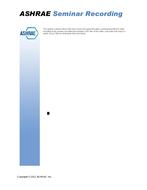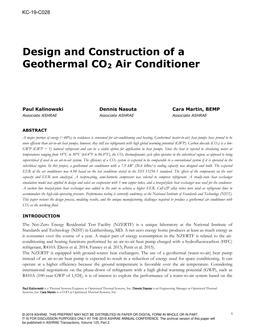A mathematical model for predicting the heat transfer and moisture-transfer processes in residential attic spaces is presented. This model is utilized to predict attic ventilation rates required for preventing condensation or frost accumulation on the underside of roof sheathing. Attic ventilation charts are developed covering a wide range of outdoor temperatures, ceiling thermal resistances, and ceiling air penetration rates. The effectiveness of a ceiling vapor barrier is investigated. The effect of indoor humidification on the required attic ventilation rate is examined. Using measured data of Hinrichs, attic ventilation rates predicted by the mathematical model are converted into net free ventilation areas for soffit venting. These values are subsequently compared with the attic ventilation requirements of ASHRAE and the HUD Minimum Property Standards.
Citation: ASHRAE Transactions, Volume 86, Part 1, Los Angeles, California
Product Details
- Published:
- 1980
- Number of Pages:
- 20
- File Size:
- 1 file , 2 MB
- Product Code(s):
- D-LA-2568


